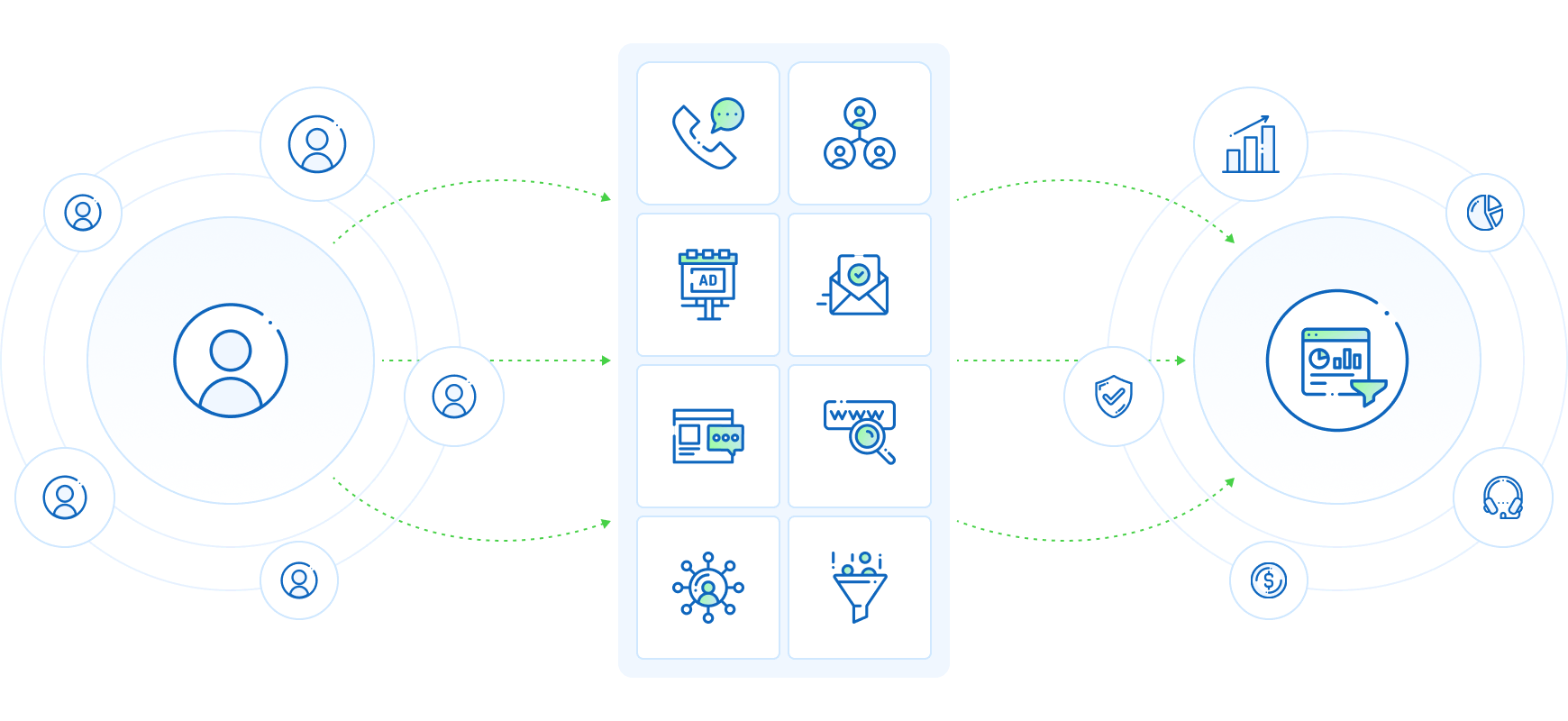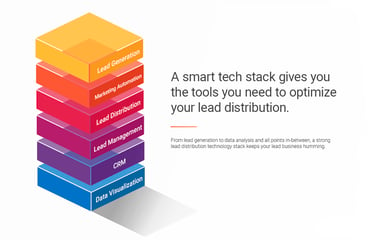How to Get the Most Out of Your Lead Sources
With so many different types of lead sources, it can be hard to know which are best. Trial and error can be expensive. This blog covers the ins and outs of lead sources, how to evaluate them, which are most effective, which have the best ROI and how to best track and monitor them.
What is a lead source?
A lead source is a method or channel that a business uses to generate sales leads or potential customers. A lead is a person or organization that has expressed an interest in a company's products or services and has provided contact information such as their name, phone number, or email address. Lead sources can include a variety of different methods, such as:
- Referrals from current or past customers
- Trade shows or events
- Cold calling or emailing potential customers
- Advertising (such as online ads or billboards)
- Social media (such as LinkedIn or Twitter)
- Organic search results (SEO)
- Paid search or search engine marketing (SEM)
- Content marketing (such as blog posts or whitepapers)
- Public relations (such as press releases or media coverage)
- Partnership or affiliate programs
- Purchased leads from a lead generation service.
The goal of a lead source is to generate a list of qualified leads that marketing and sales teams can try to convert into customers. Lead sources can be either inbound or outbound, depending on the sales process. Inbound leads initiate contact with the business, while sales reps initiate outbound lead contact.
How does lead management software help manage my lead sources?
Lead management software helps businesses organize and manage leads. It can automate and streamline the lead management process, making it more efficient and effective. There are a variety of lead management tools that can help optimize your lead sources.

Some of the ways a lead management system can help manage lead sources include:
- Lead capture and storage: Lead management software allows businesses to easily capture and store leads from various sources, such as website forms, trade shows, and social media, in a centralized database. This makes it easy to access, organize and manage the leads.
- Lead scoring and segmentation: Lead management software can help prioritize and segment leads based on their level of engagement and interest. This allows businesses to focus on the most promising leads and increase the chances of closing a sale.
- Lead nurturing: Lead management software can automate sending targeted and personalized follow-up messages to leads based on their behavior and interactions with the business. This can help keep leads engaged and increase the chances of conversion.
- Lead tracking and reporting: Lead management software can provide detailed analytics on the performance of different lead sources. This data includes conversion rate, lead-to-customer ratio, and cost per lead, which can help businesses make data-driven decisions about lead sources.
- Workflow automation: Lead management software can automate tasks such as lead assignment, follow-up schedule, and lead status updates, which can save time and increase efficiency.
How do I evaluate lead sources?
There are a few key metrics you can use to evaluate the effectiveness of different lead sources:
- Conversion rate: This is the percentage of leads that turn into paying customers. A high conversion rate indicates that a lead source is effective.
- Lead-to-customer ratio: This is the ratio of leads generated to customers acquired. A high ratio indicates that a lead source produces many leads, but most don't convert.
- Cost per lead: This is the amount of money spent to generate each lead.
- Lead quality: This is the level of engagement and interest a lead demonstrates. High levels of interest and engagement indicate a likely conversion.
- Repeat customers: This is the number of customers who have made a repeat purchase. Repeat customers are a good indicator of the effectiveness of a lead source in terms of customer satisfaction and retention.
- Lifetime value: This is the total revenue generated by a customer over the lifetime of their relationship with your business. A high lifetime value indicates that a lead source is producing high-quality customers.
Evaluating multiple lead sources over time is important to see which are strongest.
Which lead sources perform best?
The performance of different lead sources can vary depending on the specific industry and target market of a business. However, generally speaking, some lead sources tend to perform better than others:
- Referrals: Referrals from current or past customers are often considered the most valuable lead source because they have a built-in level of trust and credibility.
- Inbound marketing: Lead sources that focus on inbound marketing, such as content marketing, SEO, and social media, tend to perform well. They attract leads actively seeking a solution to a problem or seeking information about a product or service.
- Trade shows: Trade shows can be a great way to generate leads. They provide an opportunity to connect with a large number of potential customers in a short amount of time.
- Email marketing: Email marketing can be a cost-effective way to reach many prospects quickly. It's a great way to generate and nurture leads as long as the email list is segmented, targeted and the subject lines are compelling.
It's important to note that no single lead source is guaranteed to be the best for every business. Combining different lead sources to maximize the chances of closing a sale is often a good idea.
What lead sources have the highest ROI?
Lead sources with the highest return on investment (ROI) can typically generate an increased number of leads at a low cost. Some lead sources that are known for having a high ROI include:
- Referrals: Referrals have a high value and low cost and tend to have higher conversion rates than other lead sources.
- Inbound marketing: Inbound marketing costs are relatively low compared to outbound marketing, giving inbound leads a stronger ROI.
- Email marketing: Email marketing can be a cost-effective way to reach a large number of potential customers. Email marketing campaigns can be automated and scaled, making it a cost-efficient way to reach a large number of leads.
- Affiliate marketing: Affiliate marketing can be an efficient lead source, as it allows businesses to pay affiliates only for the leads that are generated. This means that you don't have to pay for leads that don't convert to customers, making it an efficient way to generate leads with high ROI
Remember that ROI varies from business to business, and it's important to regularly track and evaluate the ROI of different lead sources to see which performs best for your business.
Is buying leads cost-effective?
Buying leads can be a cost-effective way to generate new business, but it depends on the quality of the leads and the cost of the lead generation service.
Buying leads can save a significant amount of time compared to generating leads through other methods, such as cold calling or networking.
Lead generation services often provide leads that have been pre-qualified and are more likely to be interested in your product or service, resulting in a higher conversion rate.
Buying leads also allows you to scale your lead generation efforts quickly, which can be especially useful for businesses looking to grow quickly.
However, when buying leads, not all lead generation services are equal, and the quality of the leads can vary greatly. Some leads may be irrelevant or unqualified, resulting in low conversion rates.
Overall, buying leads can be a cost-effective way to generate new business. Still, it's essential to research, choose a reputable lead generation service, and evaluate the lead's quality and cost to determine if it is a cost-effective solution for your business.
Learn more about lead management software







